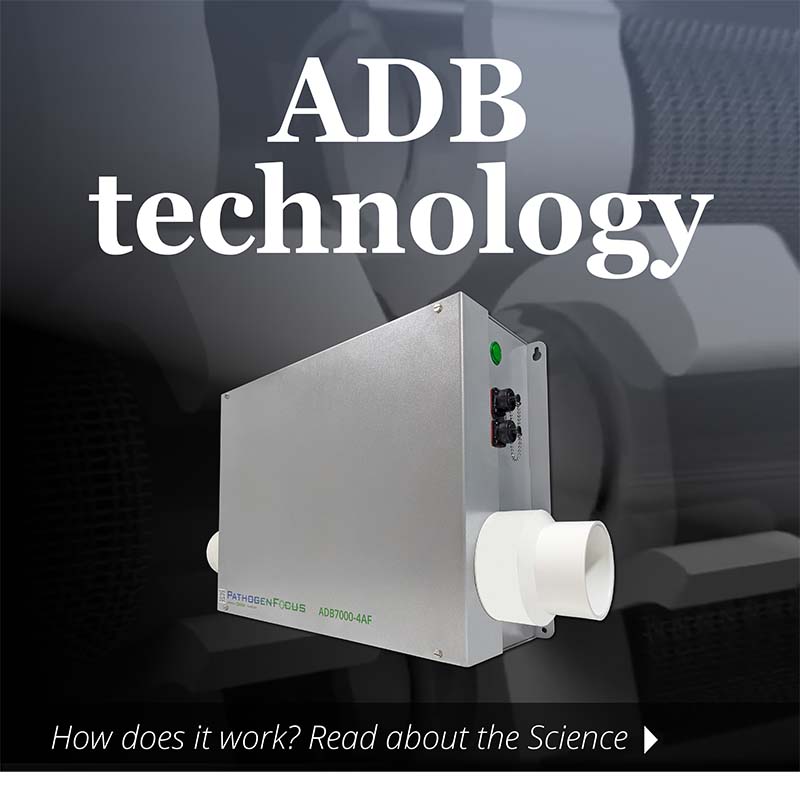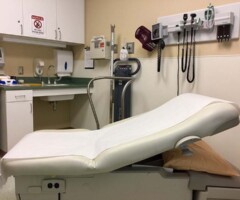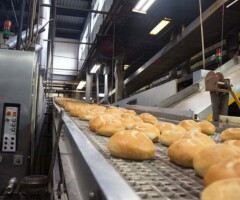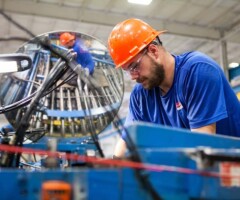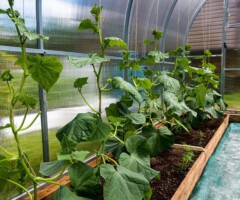Cleaner, safer facilities with PathogenFocus
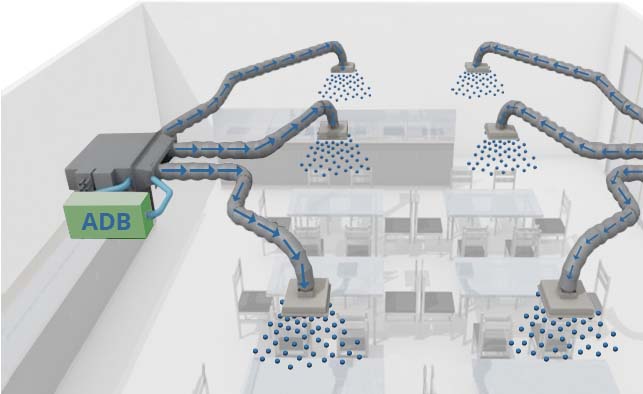
Air Disinfection Biosecurity (ADB) improves indoor air quality (IAQ) by disinfecting air and surfaces, and mitigating volatile organic compounds (VOCs). ADB seamlessly enhances:
- Safety and quality in healthcare and long-term care, commercial and municipal buildings, and transportation
- Farm-to-table protection and quality of indoor crops, produce, livestock, meat, poultry, eggs, and prepared foods
- Microbial control in sterile and non-sterile manufacturing
ADB is a proprietary Modulated Dielectric Barrier Discharge non-thermal (cold) plasma technology. Our systems use indoor air circulation to provide constant, safe and proactive disinfection (and VOC mitigation) in the air and on surfaces. ADB technology can drastically improve your facility's IAQ, which will help maintain the healthiest, most productive environment possible.
Air Disinfection Biosecurity (ADB) improves indoor air quality (IAQ) by disinfecting air and surfaces, and mitigating volatile organic compounds (VOCs). ADB seamlessly enhances:
- Safety and quality in healthcare and long-term care, commercial and municipal buildings, and transportation
- Farm-to-table protection and quality of indoor crops, produce, livestock, meat, poultry, eggs, and prepared foods
- Microbial control in sterile and non-sterile manufacturing
ADB is a proprietary Modulated Dielectric Barrier Discharge non-thermal (cold) plasma technology. Our systems use indoor air circulation to provide constant, safe and proactive disinfection (and VOC mitigation) in the air and on surfaces. ADB technology can drastically improve your facility's IAQ, which will help maintain the healthiest, most productive environment possible.

News: ADB units meet UL2998 (zero ozone) requirement for ozone safety!
“After an extensive review of over 40 research studies, it appears that PathogenFocus ADB system's near-instantaneous inactivation of pathogens in breathing-zone air, and the corresponding significant reduction in bioburden, make this technology an innovative and important part of infection prevention.”
Mark H. Ereth, MD, Emeritus Professor, Mayo Clinic College of Medicine and Science

Advantages of ADB
Rapid and continual antimicrobial technology reduces bioburden and improves indoor air quality
Disinfection for both air AND surfaces
Safe for use in occupied spaces
Requires no chemicals and leaves behind no residue
Meets USDA National Organic Standards, sub-type "Sanitizers"
Long-term cost savings in chemical use and staff labor
Smart controller for units installed with HVAC system for ease of use
No harmful UV components
Scalable to room/building size - flexible and adaptable
Standalone portable and wall-mounted units available
Mitigates many Volatile Organic Compounds (VOCs) including formaldehyde, toluene, and benzene
Quickly reduces ethylene, extending shelf life of produce. Certified Halal by Islamic Services of America
Meets California ozone emissions limit - CARB Certified. Complies with the requirements of the UL2998 "Zero Ozone" standard. Also meets UL867 standard (ADB 7000-AF).
Potential HVAC energy savings by reducing amount of outside air needed
Works MUCH faster than other products in the marketplace
ADB: The faster, better pathogen mitigating technology
Our Air Disinfection Biosecurity units were tested in an independent third party laboratory against other popular![]() pathogen elimination products - bipolar ionization, photocatalytic oxidation, and UVC. These results are from a 2,640 cubic foot room (22 foot width x 12 foot length x 10 foot height). ADB dramatically outperformed the other products.
pathogen elimination products - bipolar ionization, photocatalytic oxidation, and UVC. These results are from a 2,640 cubic foot room (22 foot width x 12 foot length x 10 foot height). ADB dramatically outperformed the other products.
ADB worked significantly faster in reducing viruses and bacteria in the air and on surfaces. With the aerosolized pathogens, ADB was exponentially better - achieving upwards of 99% reduction when the other methods were only beginning to have an affect.
Performance against airborne viruses in one minute:
- PathogenFocus MDBD achieved a 7.74-log reduction (99.99998%)
- Bipolar Ionization (BPI) Brand A - 4.90909%
- Bipolar Ionization (BPI) Brand B - 23.94000%
- Photocatalytic Oxidation (PCO) - 11.54555%
- UVC - 6.96909%
ADB saw similar success against the other methods when tested against surface bacteria. PathogenFocus' MDBD units achieved a 7.89-log reduction (99.99998%) in 30 minutes. Other methods tested in that time - BPI Brand A: 71.15385%; BPI Brand B: 60.25641%; PCO: 23.07692%; and UVC: 8.333339%.
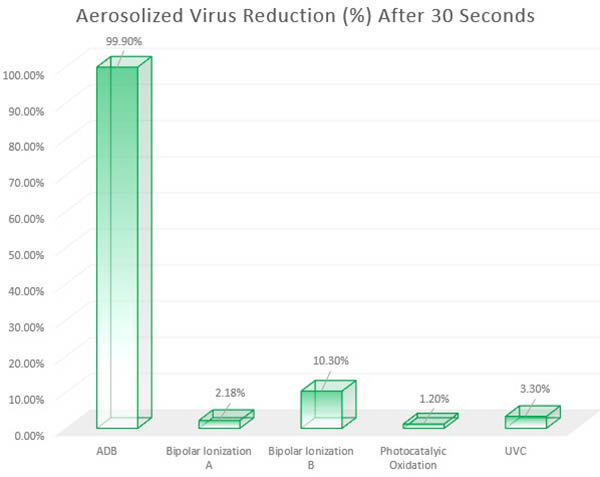
ADB: The faster, better pathogen mitigating technology
Our Air Disinfection Biosecurity units were tested in an independent third party laboratory against other popular![]() pathogen elimination products - bipolar ionization, photocatalytic oxidation, and UVC. These results are from a 2,640 cubic foot room (22 foot width x 12 foot length x 10 foot height). ADB dramatically outperformed the other products.
pathogen elimination products - bipolar ionization, photocatalytic oxidation, and UVC. These results are from a 2,640 cubic foot room (22 foot width x 12 foot length x 10 foot height). ADB dramatically outperformed the other products.
ADB worked significantly faster in reducing viruses and bacteria in the air and on surfaces. With the aerosolized pathogens, ADB was exponentially better - achieving upwards of 99% reduction when the other methods were only beginning to have an affect.
Performance against airborne viruses in one minute:
- PathogenFocus MDBD achieved a 7.74-log reduction (99.99998%)
- Bipolar Ionization (BPI) Brand A - 4.90909%
- Bipolar Ionization (BPI) Brand B - 23.94000%
- Photocatalytic Oxidation (PCO) - 11.54555%
- UVC - 6.96909%
ADB saw similar success against the other methods when tested against surface bacteria. PathogenFocus' MDBD units achieved a 7.89-log reduction (99.99998%) in 30 minutes. Other methods tested in that time - BPI Brand A: 71.15385%; BPI Brand B: 60.25641%; PCO: 23.07692%; and UVC: 8.333339%.
Where can ADB technology be used?
Air Disinfection Biosecurity technology provides continuous protection. These systems work continuously to neutralize harmful pathogens and prevent potential re-contamination on air and surfaces. ADB has been utilized in the US since 2008. In that time, tens of thousands of ADB units have been utilized in over 1,000 installations.
ADB can be used in a wide variety of applications, including the below:
How does ADB work?
ADB proactively eliminates airborne and surface pathogens by creating cold plasma in the chamber, then emitting an array of highly reactive molecules including hydrogen peroxide (H2O2), into the treatment space. The treatment continuously sanitizes ambient air and indoor surfaces. ADB treatment is not limited to line-of-sight or physical distance but works everywhere air can reach. ADB can be safely delivered in occupied spaces, with no negative impact on customers or workflow. These units work in conjunction with a facility's existing HVAC/air handling system, or as standalone units, and can be scaled to any size treatment space without sacrificing treatment efficacy.
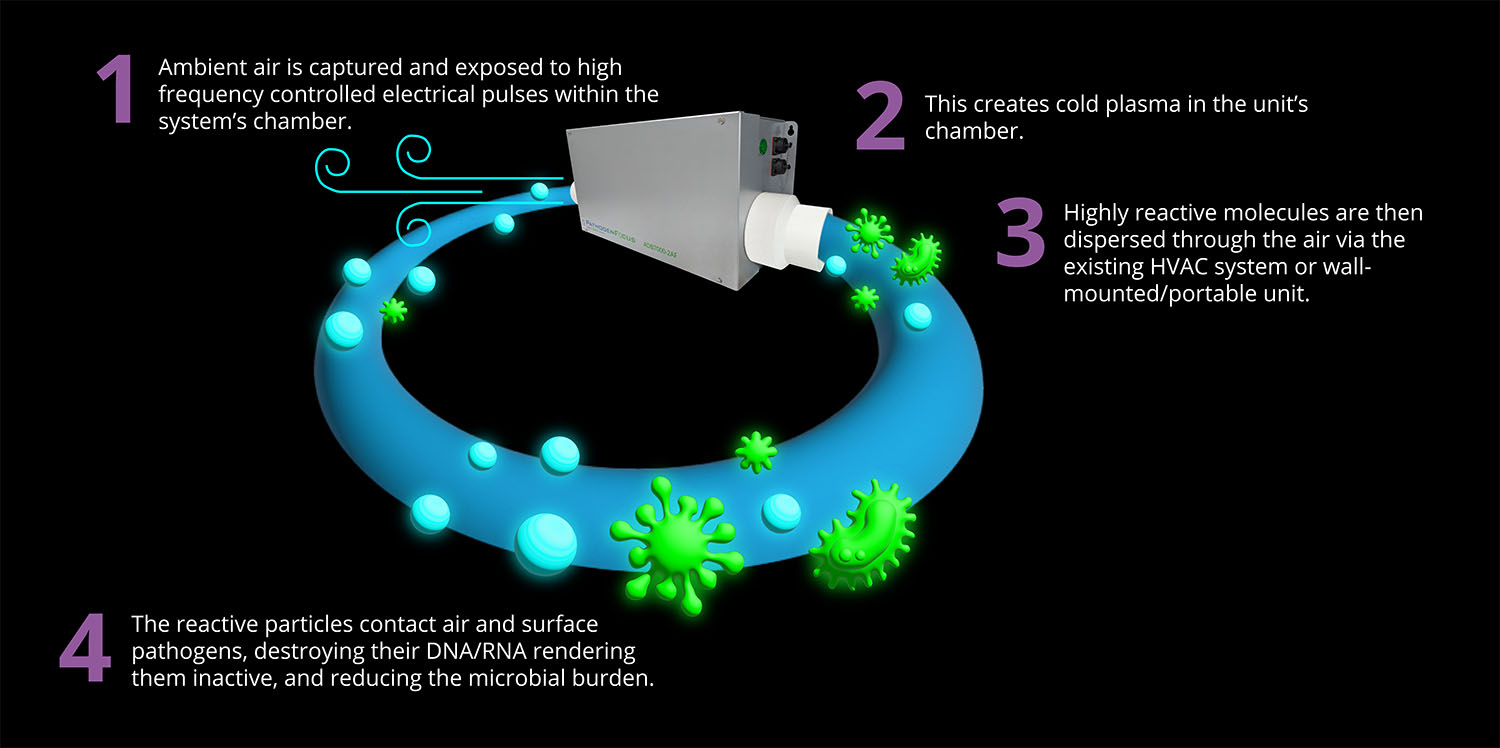
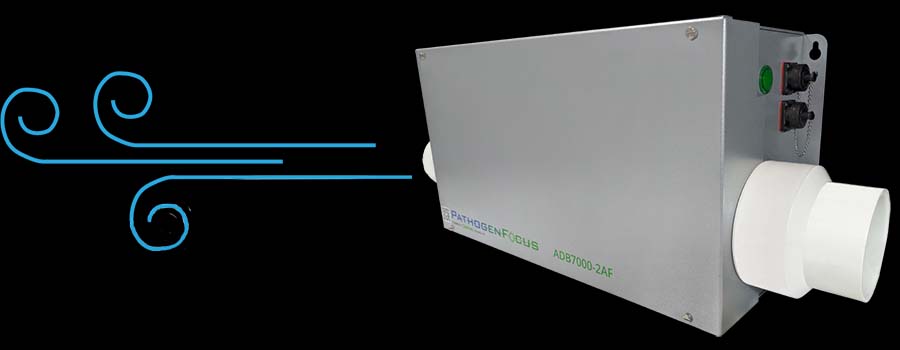
1.
Ambient air is captured and exposed to high frequency controlled electrical pulses within the system’s chamber.
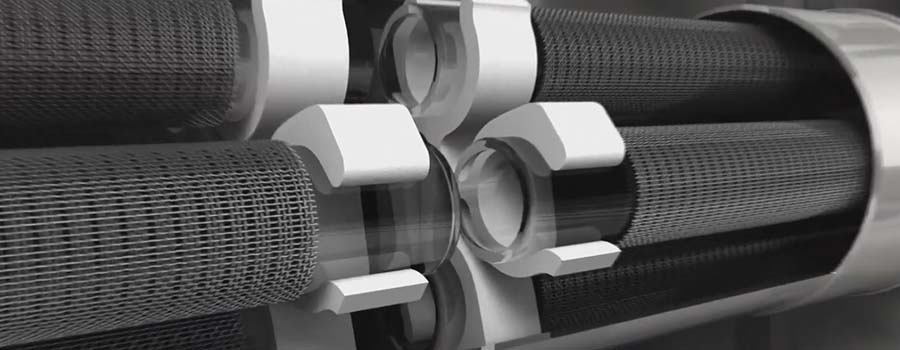
2.
This creates cold plasma in the unit's chamber.
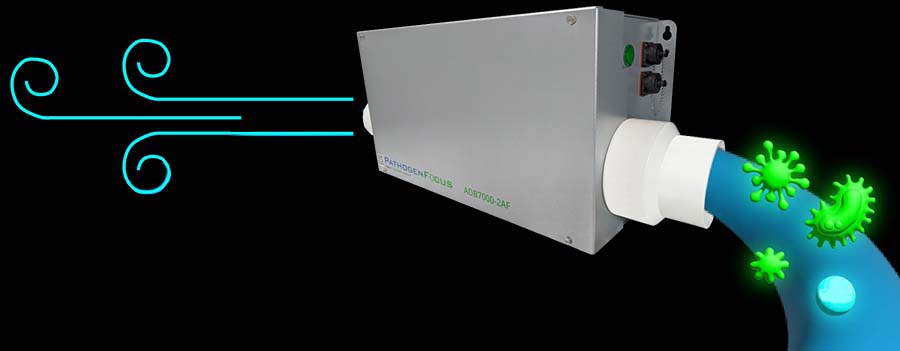
3.
Highly reactive molecules are then dispersed through the air via the existing HVAC system or from the wall-mounted/portable unit.

4.
The particles contact air and surface pathogens, destroying their DNA/RNA rendering them inactive, and reducing the microbial burden.





